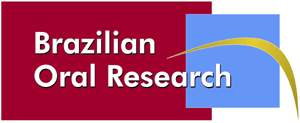Resumo em Inglês:
Abstract This study aimed to evaluate the contribution of oral and maxillofacial pathology laboratories (OMPLs) in Brazilian public universities to the diagnosis of lip, oral cavity, and oropharyngeal squamous cell carcinoma (SCC). A cross-sectional study was performed using biopsy records from a consortium of sixteen public OMPLs from all regions of Brazil (North, Northeast, Central-West, Southeast, and South). Clinical and demographic data of patients diagnosed with lip, oral cavity, and oropharyngeal SCC between 2010 and 2019 were collected from the patients’ histopathological records. Of the 120,010 oral and maxillofacial biopsies (2010-2019), 6.9% (8,321 cases) were diagnosed as lip (0.8%, 951 cases), oral cavity (4.9%, 5,971 cases), and oropharyngeal (1.2%, 1,399 cases) SCCs. Most cases were from Brazil’s Southeast (64.5%), where six of the OMPLs analyzed are located. The predominant profile of patients with lip and oral cavity SCC was Caucasian men, with a mean age over 60 years, low schooling level, and a previous history of heavy tobacco consumption. In the oropharyngeal group, the majority were non-Caucasian men, with a mean age under 60 years, had a low education level, and were former/current tobacco and alcohol users. According to data from the Brazilian National Cancer Institute, approximately 9.9% of the total lip, oral cavity, and oropharyngeal SCCs reported over the last decade in Brazil may have been diagnosed at the OMPLs included in the current study. Therefore, this data confirms the contribution of public OMPLs with respect to the important diagnostic support they provide to the oral healthcare services extended by the Brazilian Public Health System.
